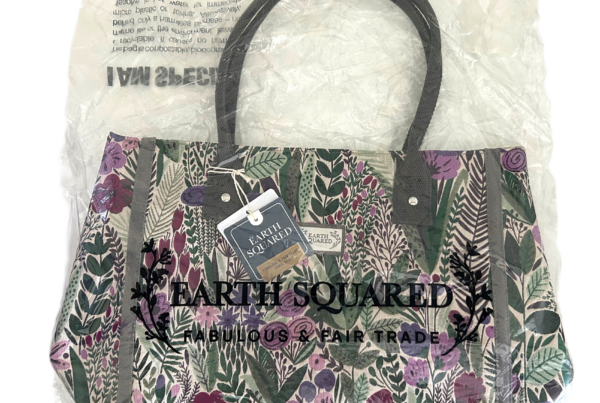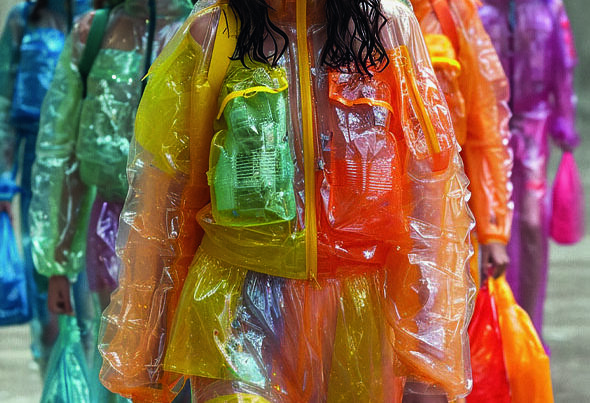Comment: Mark Lapping, Aquapak Polymers’ CEO, says collaboration across the supply chain is the key to unlocking the circular economy.

Plastic has so many beneficial properties – product protection, light weight and low cost – that it has meant that we have become addicted to the material!
And we haven’t managed its end of life effectively.
More than 350 million tons of polymers are made every year, with this growing 5% per annum.
Half of the plastic we make is for single-use products which are used for a very short time before being binned, creating waste which lasts for decades and centuries.
Just an estimated 14% of plastic waste goes to recycling facilities and statistics suggest there will be 1.3 billion tonnes of plastic waste discarded on land and in bodies of water by 2040.
Overcoming the barriers to the circular economy
To create a truly circular economy, the world must overcome a number of different barriers. Consumers have become used to convenience and this means that we now use 20 times more plastic than we did 50 years ago.
Our research shows that the majority (67%) of people want to buy more products that do not use single-use plastic packaging. Furthermore, over half (54%) said that they will try and stop buying products which use single-use plastic packaging completely over the next three years.
Significantly, more than half (52%) are prepared to pay more for environmentally friendly packaging. This is extremely good news for the planet.
We also need to tackle the business and regulatory environment which doesn’t always support sustainable behaviour among companies and consumers.
The world’s recycling infrastructure also remains woefully inadequate. Nearly one-third of plastics are not collected by a waste management system and end up as litter on land, and in rivers and oceans.
Although recycling technology exists, it needs more investment Most plastics that are recycled are shredded and reprocessed into lower-value applications, such as polyester carpet fibre; only 2% are recycled into products of the same or similar quality.
Collaboration is key
Not only is solving the plastic problem a huge task, it is complex, involving many different actors, from governments and regulators, to product designers and retailers, industry bodies and waste management companies, through to the end consumer.
Collaboration across the supply chain is the key to unlocking the circular economy. We need to pool our technical expertise and resources to bring together ideas and thinking which will enable us to produce new materials which will genuinely help solve the world’s current – and potentially catastrophic – plastic waste problem if we don’t.
Material manufacturers need to collaborate to understand how their materials can work together to maintain functionality, whilst simplifying constructions and enabling the reuse of materials. Packaging designers and material manufacturers need to work together so that packaging is designed to be separated for easier and more economic recycling, without simply relying on consumer action.
When it comes to improving the recycling infrastructure and recycling rates, recyclers and material manufacturers need to share details on new materials, how they can be recycled, the economics to make it viable and how they can be labelled and identified against traditional, non-recyclable packaging such as coated paper.
Waste management companies, retailers and trade bodies also need to place much greater focus on developing closed loop systems to make transportation easier and cheaper, in turn making recycling economically viable. Councils and recyclers need to consider if weight-driven targets are appropriate and develop homogenous alternatives that encourage recycling.
Collaboration in action
An example of how effective it is to pool resources and expertise is our own relationship with international packaging company, DS Smith.
We have been working together to find a solution to the issue of non-recyclable paper packaging, the use of which has increased as the industry has moved to replace conventional, hard to recycle and single use plastics.
This has resulted in a wide variety of fibre-based packaging formats combined with alternative functional barriers being introduced into the recovered paper recycling streams. However, the materials currently being used to give paper the packaging functionality required for products such as food, drink and household goods, are not easily recyclable and mean that the paperboard is rejected because paper mills cannot process the paper and plastic combinations. Instead, they are incinerated or go to landfill.
Investment is being made in new materials that provide the benefits of plastic and help existing materials in the economy by identifying new materials that provide circularity and multiple end of life options. We all need to recognise there is a new way of working and harness the power of collaboration to dramatically accelerate the pace of change to transition to the circular economy.



